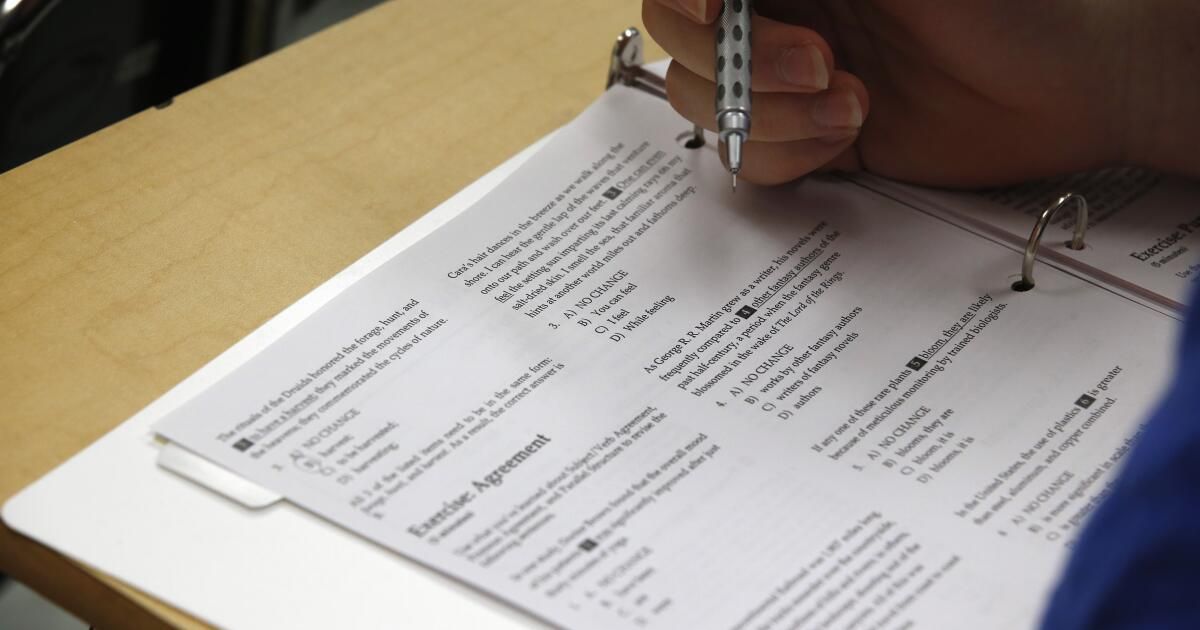I live in Northern California, but I'm traveling to Texas to take the SAT on Saturday.
It's not for lack of planning on my part. I went to the College Board site to register for the June SAT first thing in the morning on the first day students could register. But within minutes, every seat in my county and all of Northern California was gone. Check in for the SAT in the Bay Area It's as difficult as getting tickets to a Taylor Swift concert.
I'm not the only one In California going to extremes to find a place to take a college entrance exam. A mother in my community posted on her Facebook page: “It took two months of effort and three calls to ACT to get a place that is over 100 miles away!” Other California families joined the conversation, explaining: “The same thing happens in Southern California. Last year we had to drive 100 miles for a test at 8am so we spent the night…very irritating.”
I know the SAT and ACT tests are controversial. I'm not here to debate whether they should exist. The fact is that they still matter, whether we like it or not. As far as the 2025 college application cycle is concerned, only 4% of four-year colleges are test-blind, meaning they do not accept test results. The majority of schools (87%) offer optional tests (also known as preferred tests) and the remaining 9% are required tests. according to Fairtest. If a good score on a test could increase my chances of being accepted into 96% of four-year colleges, I want to have access to that test. And while most colleges offer test-optional, those tests should be available to all high school students.
So yes, I'm traveling 1,800 miles to take the SAT. (We chose Dallas because they had plenty of seats available and cheap flights.) Having parents with the financial means and flexibility in their work schedules to take me to a testing site far from home is an advantage that many others do not have. The lack of testing sites in California is not just an inconvenience, it is an issue of equity.
California students who are unable to take the test due to lack of access will miss admission opportunities to some colleges and scholarships that consider or require SAT/ACT scores in their decisions. For many students, especially those from low-income families, this could mean losing out on aid that would make college affordable.
The lack of adequate testing sites appears to be especially problematic in Northern California. Looking at the SAT test date of August 24 demonstrates this. If you had searched the College Board's website earlier this week for testing centers within 100 miles of San Francisco, Dallas, and New York City, you would have found 103 testing sites in the New York area, 49 of them which still had seats available. In the Dallas area there were 69 testing sites and 65 of them were still available. But in the Bay Area, there were only 12 testing sites and they were 100% booked for August testing. In fact, the closest testing center to San Francisco with availability was 405 miles away. This lack of access puts Northern California students at a disadvantage.
Obviously, California needs more testing sites. But I would advocate for offering college entrance exams to every high school student at their own school during a regular school day, as is done with other standardized tests like the California Assessment of Student Performance and Progress.
After my family and others raised the issue of the lack of available testing sites with our superintendent, our school district agreed to host an SAT School Day in October. This will allow district students to take the SAT at their school during regular school hours. But change in one school district is not enough. California students and parents should demand more testing sites in more schools so more California children can pursue their college dreams.
Sebastian Gillmore is a junior at Tamalpais High School in the San Francisco Bay area.











